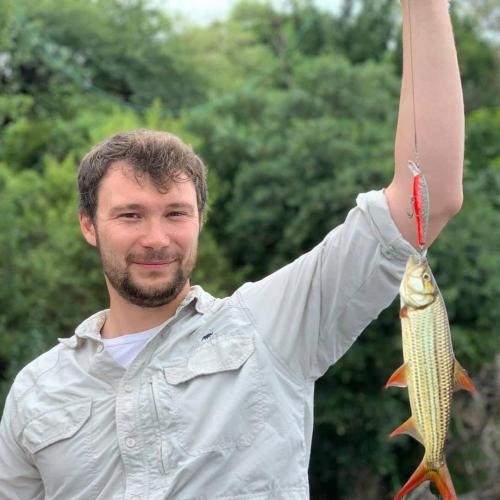
Waidgerecht
Short profile
Duration

Copyright Foto: Florian Möllers, AVN
Not all fish caught in recreational angling are harvested for consumption. Some are released after capture, for example, because regulations such as minimum size limits require undersized fish to be returned to the water. Even harvestable fish may be released, for instance, because they were not the target species and were caught as bycatch. Regardless of the reasons for releasing a caught fish, several important biological and ecological questions arise, which are systematically addressed in the WAIDGERECHT project: Do released fish survive, and to what extent? Does catch-and-release impact fish physiology, behavior, reproduction, or growth? And what can anglers do to handle fish as carefully and humanely as possible when they must or wish to release them?
To answer these questions and develop practical recommendations responsible catch-and-release practices, the project conducts a systematic literature search and synthesis using relevant scientific studies. All scientific studies dealing with catch-and-release in angling-relevant species in Germany are identified and evaluated for their quality, reliability, and content. The findings are then systematically processed and translated into species-specific guidelines for a new standard of release.
The focus lies on native and angling-relevant species in Germany, such as Northern Pike, Brown Trout, Rainbow Trout, Atlantic Salmon, Pikeperch, Wels Catfish, Common Carp, and European Perch, as well as closely related species like Yellow Perch, Muskellunge or Walleye, which are native to North America and closely related to European Perch, Pike and Pikeperch.
The goal of the synthesis is to identify the available knowledge on both lethal and sublethal effects of catch-and-release, with a focus on quantifying mortality rates as well as angling- or gear-related factors (e.g., gear type, capture depth) that influence mortality or sublethal outcomes on behaviour, condition, growth, and reproduction. Moreover, critical environmental factors such as water temperature will be identified for each relevant species to determine conditions that are either optimal or harmful in the context of catch-and-release.
The project is ethically neutral, meaning it does not take a stance on whether catch-and-release is morally acceptable or not. Instead, it addresses the factual scientific question: If, for whatever reason, fish are caught and released, how can this practice be carried out in a responsible, fish-friendly, and sustainable manner, and what species-specific considerations must anglers take into account. Do the same recommendations apply across all species, or are there species-specific responses to release?
The results will be made publicly available in a database at www.ifishman.de, with expert commentary. They will serve as the basis for best-practice recommendations to anglers. These knowledge-based guidelines describe how survival after release can be maximized and how other negative effects (e.g., injuries) can be minimized. In this context, anglers have considerable influence, which can mean the difference between harm and well-being—and which, to date, is either not widely known or underutilized in practice.
HIT-Stiftung, FUND-Stiftung



